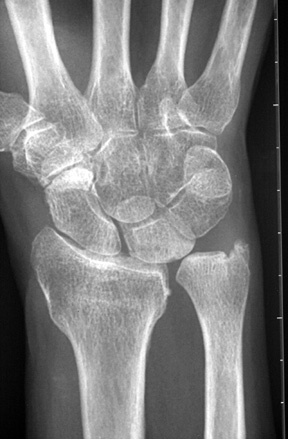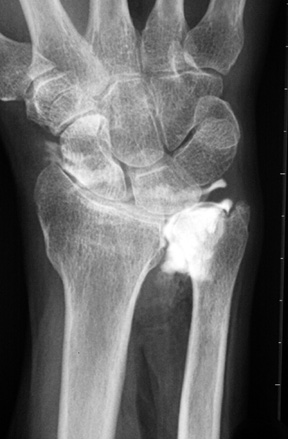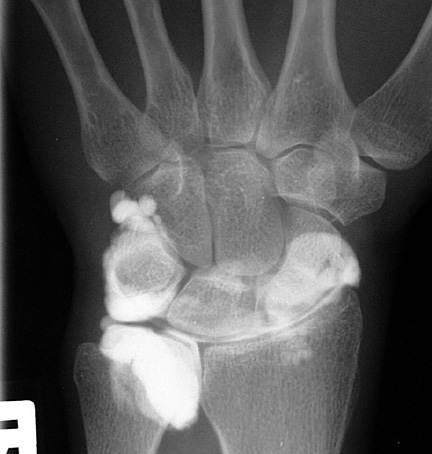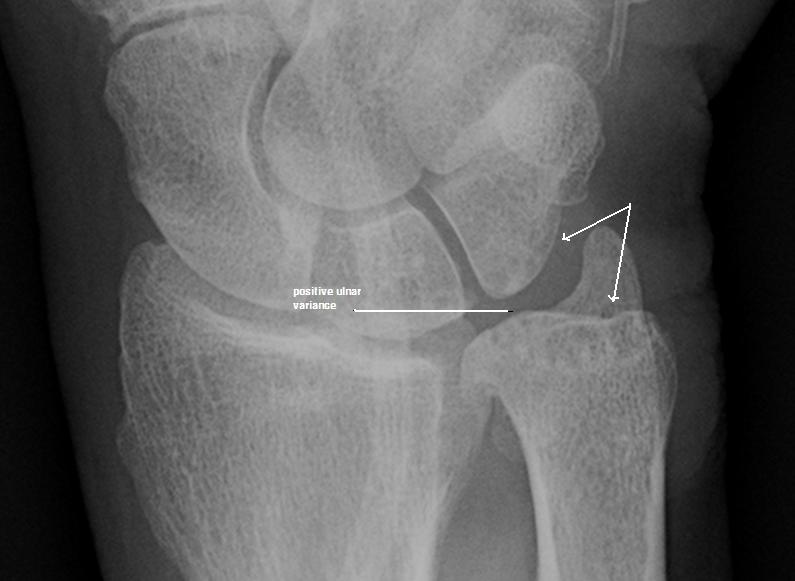| UW MSK Resident Projects |
|
|
|
|
TFCC tears and Ulnocarpal ImpactionPrint-friendly version of this pagePosted by azuarmd@yahoo.com, 6/26/04 at 4:03:02 PM.
TRIANGULAR FIBROCARTILAGE COMPLEX (TFCC) and ULNARCARPAL IMPACTION (or IMPINGEMENT) SYNDROME TFCC was first described in 1981 by Werner and Palmer as the ligamentous and cartilaginous structures that suspend the distal radius and ulnar carpus from the distal ulna. It is the the major ligamentous stabilizer of the distal radioulnar joint (DRUJ) and the ulnar carpals. Functions:
- Provides for a continuous gliding surface for flexion-extension and translational movements of the forearm and for stable rotational movements of the radiocarpal unit about the ulnar axis. -
Suspends the ulnar carpus from the dorsal ulnar face of the radius and
cushions the forces directed through the ulnocarpal axis. ANATOMY: MECHANISMS OF INJURY TO TFCC: - falls onto pronated hyperextended wrist - twisting w/ palmar rotation - forced ulnar deviance, such as batting a baseball, subjects the TFC to heavy loads - associated with distal radius fractures - ulnocarpal impaction syndrome (see below) SYMPTOMS: TFCC injuries cause ulnar-sided wrist pain, frequently with clicking or crepitus and tenderness between the ulna and triquetrum. ULNOCARPAL IMPACTION SYNDROME is impingement of distal ulna on carpi which may arise from positive ulnar variance or non union of distal ulnar fracture. It is a common inciting cause of degenerative tears. (Note: those with positive ulnar variance can develp TFCC tears, and those with TFCC tears often demonstrate positive ulnar variance.) Patients with a torn TFCC display positive ulnar variance (radial shortening) on average 4.6 mm versus 2.5 mm for no tear and dorsal angulation of 24° versus 12° for no tear. - increased ulnar variance leads to loading of the ulnocarpal joint and resultant lunotriquetral disruption, lunate chondral lesion, and triangular fibrocartilage complex tears - during marked ulnar deviation, compressive load on TFCC, particularly w/ positive ulnar variance, may increase markedly RADIOGRAPHIC FINDINGS - may show flattening, subchondral sclerosis or cysts, and/or lytic changes in lunate and/or triquetrum with similar changes seen over the distal ulna - patients may have positive ulnar variance - in subtle cases, a pronation grip radiograph may demonstrate ulnar variance
Note the positive ulnar variance and lunotriquetral impaction on this patient. There are subchondral cysts in the ulnar styloid, indicating degenerative changes from chronic impaction. Subsequent contrast injection into the DRUJ has extravasated into the radialcarpal joint, indicating TFCC tear.
Note in this patient that the contrast injected into the midcarpal joint has extravasated into the radialcarpal joint and DRUJ, indicating tear of the TFCC.
Another patient with ulnar impaction syndrome. Note the degenerative changes (osteophytes and subchondral cysts) in the distal ulna, scaphoid and lunate (white arrows), along with positive ulnar variance. Sources: http://www.wheelessonline.com/med.htm http://www.emedicine.com/orthoped/byname/triangular-fibrocartilage-complex-injuries.htm
|
|



